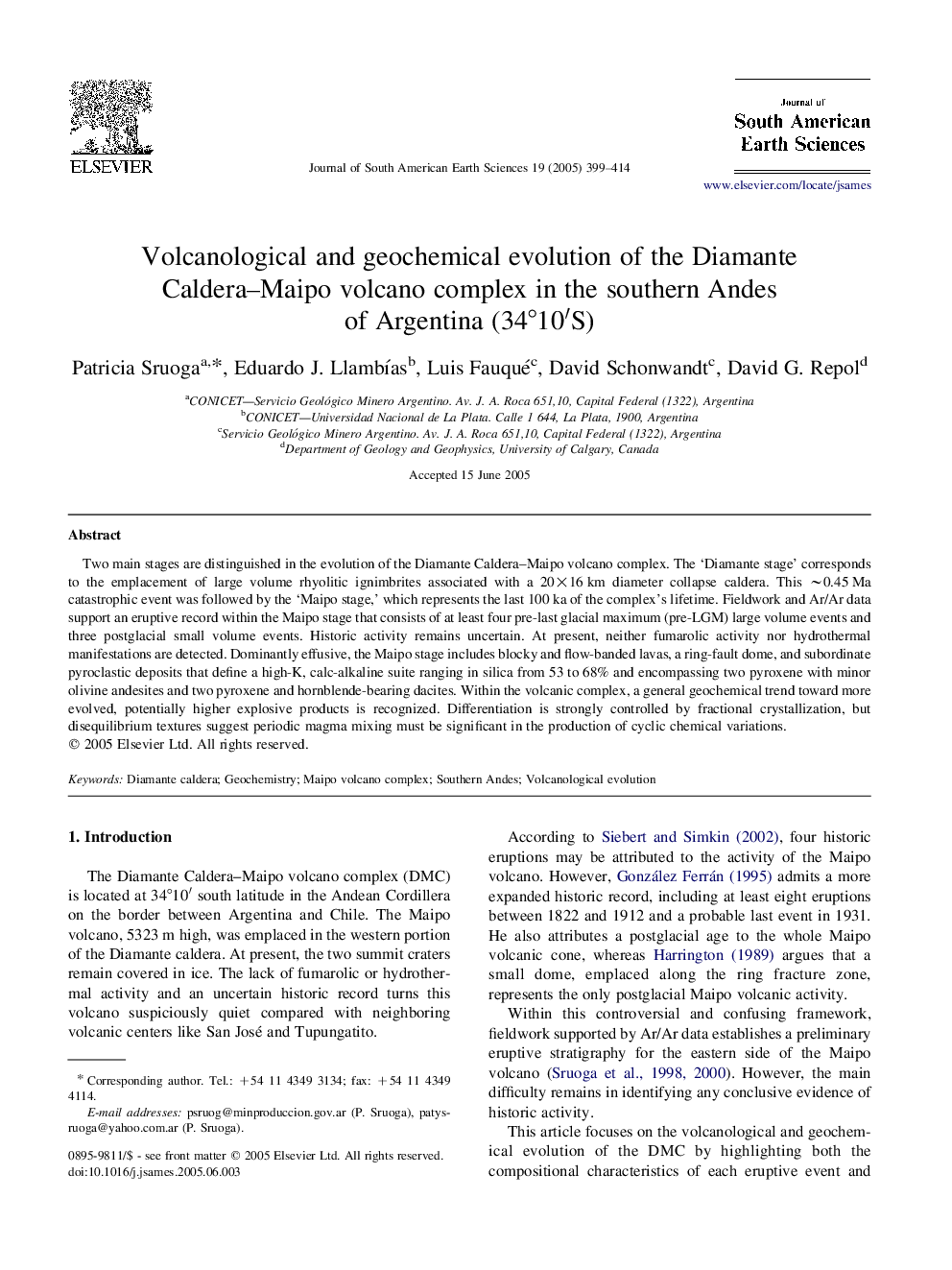| Article ID | Journal | Published Year | Pages | File Type |
|---|---|---|---|---|
| 9524416 | Journal of South American Earth Sciences | 2005 | 16 Pages |
Abstract
Two main stages are distinguished in the evolution of the Diamante Caldera-Maipo volcano complex. The 'Diamante stage' corresponds to the emplacement of large volume rhyolitic ignimbrites associated with a 20Ã16Â km diameter collapse caldera. This â¼0.45Â Ma catastrophic event was followed by the 'Maipo stage,' which represents the last 100Â ka of the complex's lifetime. Fieldwork and Ar/Ar data support an eruptive record within the Maipo stage that consists of at least four pre-last glacial maximum (pre-LGM) large volume events and three postglacial small volume events. Historic activity remains uncertain. At present, neither fumarolic activity nor hydrothermal manifestations are detected. Dominantly effusive, the Maipo stage includes blocky and flow-banded lavas, a ring-fault dome, and subordinate pyroclastic deposits that define a high-K, calc-alkaline suite ranging in silica from 53 to 68% and encompassing two pyroxene with minor olivine andesites and two pyroxene and hornblende-bearing dacites. Within the volcanic complex, a general geochemical trend toward more evolved, potentially higher explosive products is recognized. Differentiation is strongly controlled by fractional crystallization, but disequilibrium textures suggest periodic magma mixing must be significant in the production of cyclic chemical variations.
Keywords
Related Topics
Physical Sciences and Engineering
Earth and Planetary Sciences
Earth and Planetary Sciences (General)
Authors
Patricia Sruoga, Eduardo J. LlambÃas, Luis Fauqué, David Schonwandt, David G. Repol,
